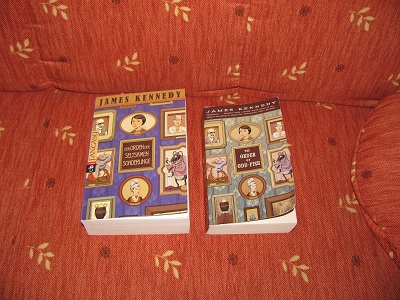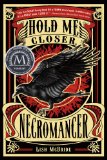Review of Stolen Magic, by Stephanie Burgis
by Stephanie Burgis
Atheneum Books for Young Readers, New York, 2013. 383 pages.
Starred Review
Hooray! A third book about the Kat, Incorrigible! These books are a delightful combination of Regency England, with its proper manners and society dos and don’ts, combined with Magic! I recommended it just this week to someone whose daughter loved Sorcery and Cecilia, by Patricia C. Wrede and Caroline Stevermer. The main difference is that Kat is younger, though her siblings get into romantic adventures in each book, so there is still a touch of romance, but Kat keeps it light-hearted.
Kat is the youngest of four siblings. Her mother died when she was ten days old, but left a legacy of two kinds of magic, in conflict. It turns out that her mother was one of the ever-so-proper Guardians of England, with strong magic for protecting the country. But her mother was kicked out of the Guardians for practicing witchcraft. Kat has inherited her abilities in both, but needs to keep from practicing witchcraft if she wants to be initiated into the Guardians.
In this third book, Kat is getting ready for her initiation. But the whole family is also getting ready for her sister Angeline’s wedding. They are staying at Angeline’s husband-to-be’s home, and his family is not at all welcoming. They are high in society and very wealthy and don’t approve of Angeline, and even less of Kat. And if Angeline lets slip that she is a witch? Well, that could very well be the last straw.
Meanwhile, it seems that someone is stalking Kat and trying to hurt the people she loves. And all the “extra” portals have been stolen, so Kat may not be able to join the Guardians after all.
All this takes place in a proper setting seen through the eyes of Kat — who isn’t exactly known for following conventions.
Here’s how the book begins:
Despite what either of my sisters may say, I actually possess a great deal of common sense. That was why I waited until nearly midnight on the last night of our journey into Devon before I climbed out of my bedroom window.
Luckily, my family was staying on the first floor of the inn, so the rope I’d brought along in case of emergencies was more than long enough. Luckier yet, I knew a useful secret: it’s much easier to sneak out in the middle of the night when you can make yourself invisible.
Though you could enjoy this book on its own, I really think you’ll appreciate it more if you read Kat, Incorrigible and Renegade Magic first. And I was very happy to see that this book ends with hints of trouble to come: England is at war with Napoleon, and French magic-users are proving to be very powerful. The story comes to a satisfying conclusion, but I was happy that there is clearly more to come, and I will be waiting eagerly.
This series just makes me smile! Think light-hearted Jane Austen for kids — with magic!
stephanieburgis.com
KIDS.SimonandSchuster.com
Find this review on Sonderbooks at: www.sonderbooks.com/Childrens_Fiction/stolen_magic.html
Disclosure: I am an Amazon Affiliate, and will earn a small percentage if you order a book on Amazon after clicking through from my site.
Source: This review is based on a copy sent to me by the publisher.
Disclaimer: I am a professional librarian, but I maintain my website and blogs on my own time. The views expressed are solely my own, and in no way represent the official views of my employer or of any committee or group of which I am part.
Please use the comments if you’ve read the book and want to discuss spoilers!










